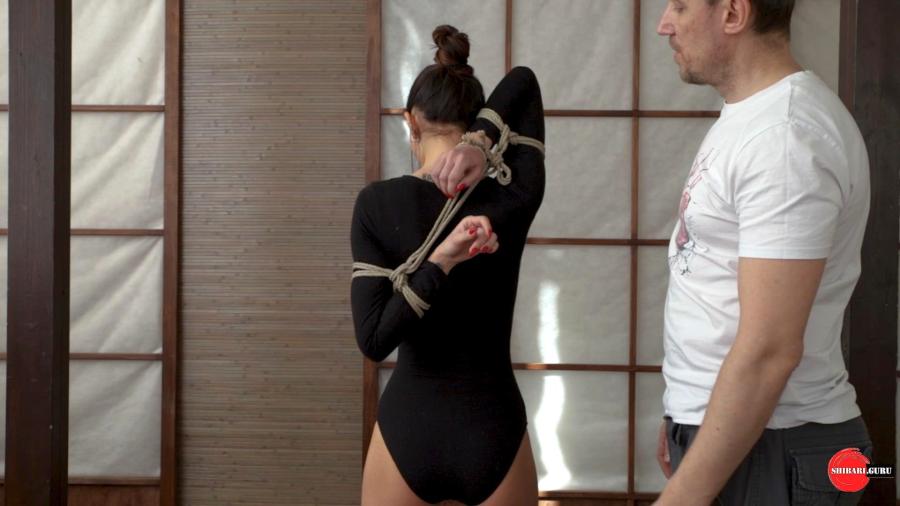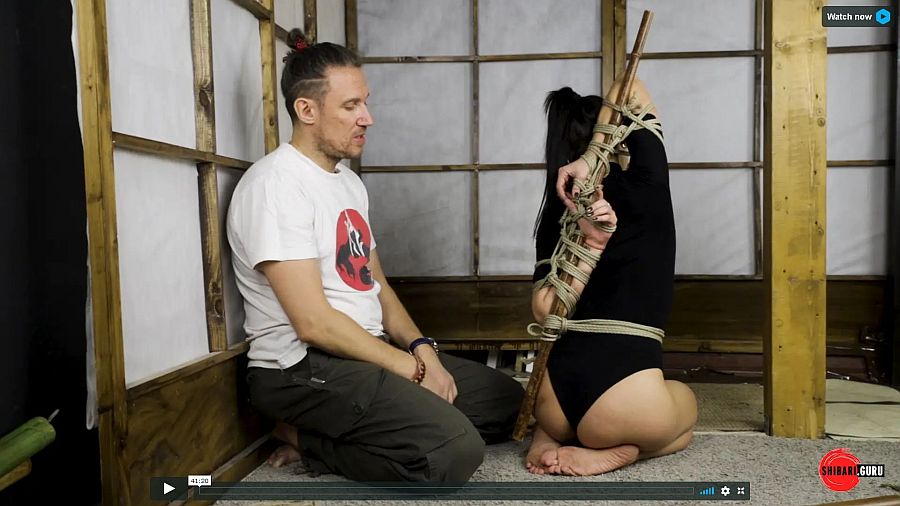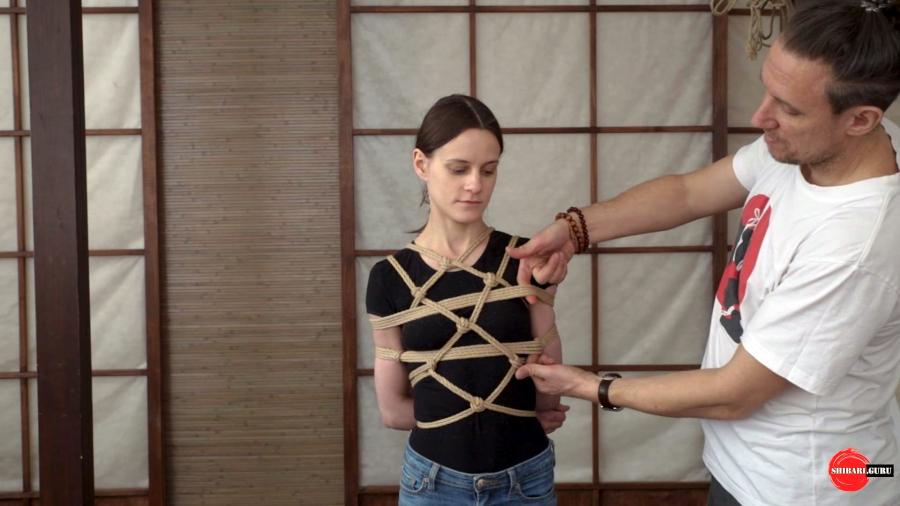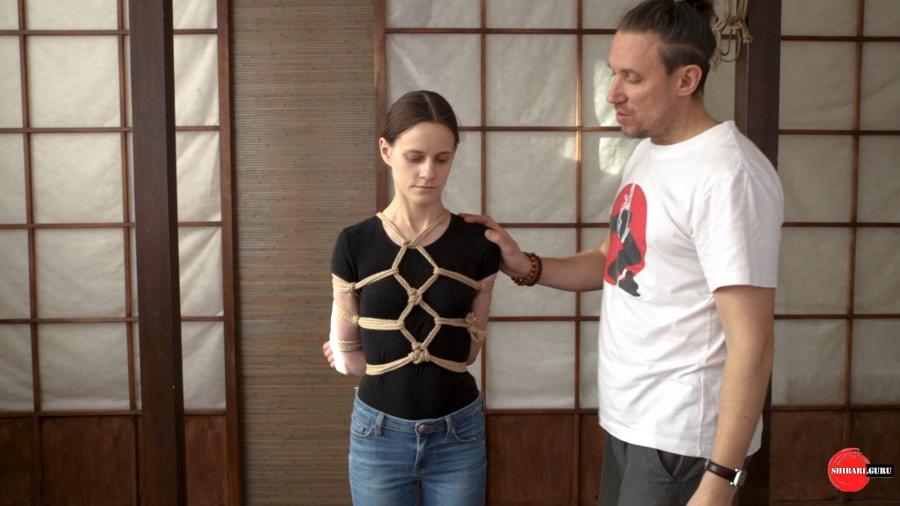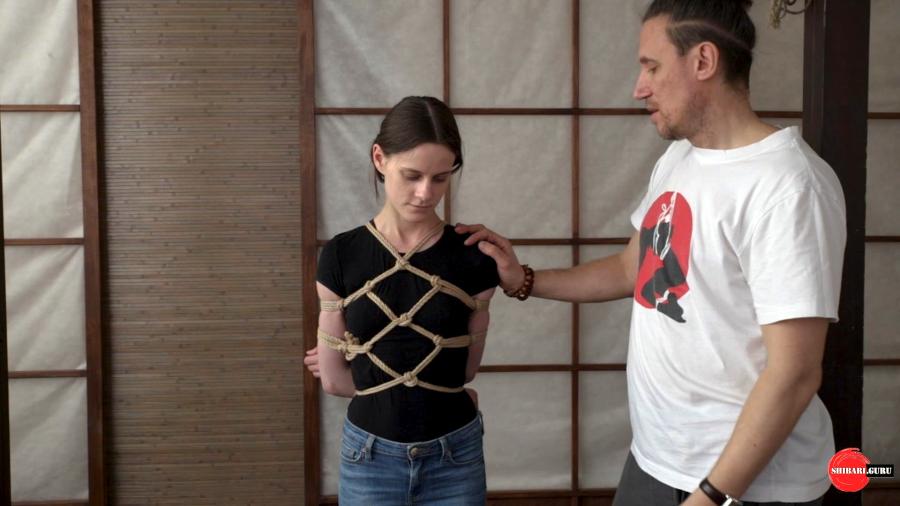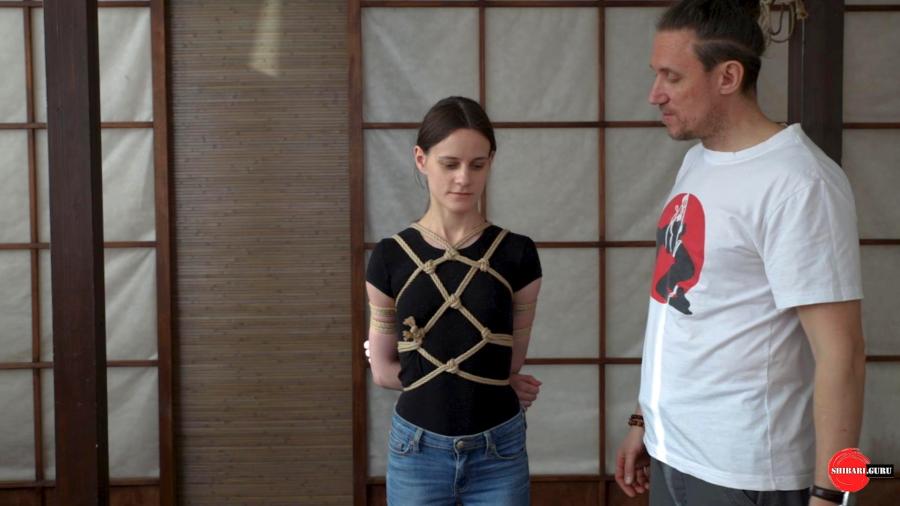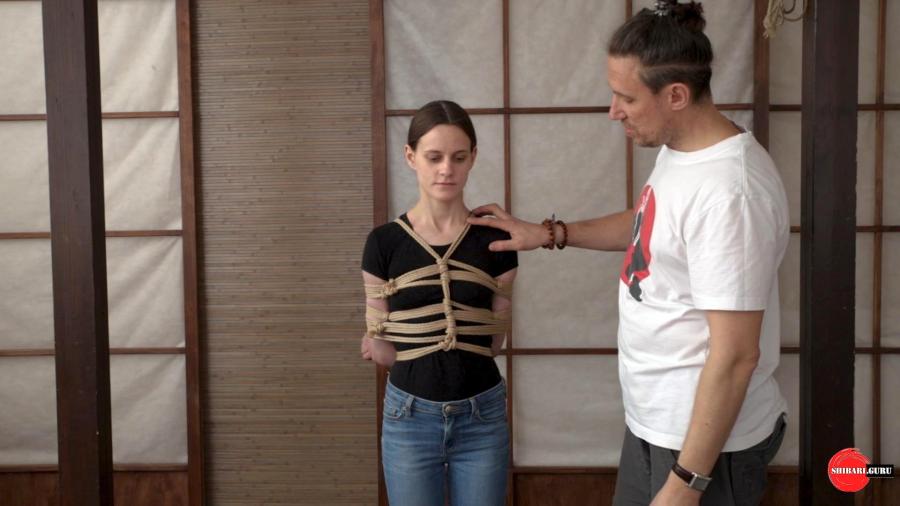Additional shibari hand binding patterns
Teppo and Wakizarashi shape
In this lesson, we will fix the skill of linking the simplest shibari patterns using a combination of basic patterns. Teppo is a harness in which one arm is laid behind the back from above and the other from below. A diagonal is formed behind the back, resembling a weapon placed behind the back. Teppo – in Japanese means a gun. Wakizarashi means arms folded behind the head. In Europe, this position is called the “rabbit” (bunny).

 Русский
Русский